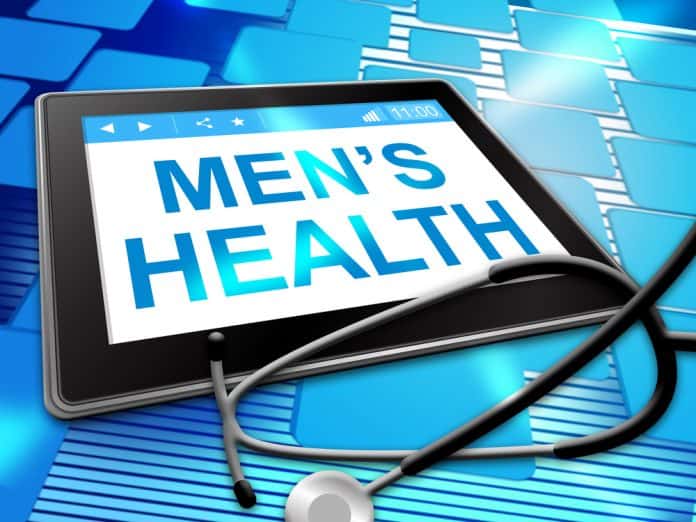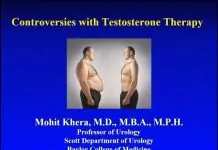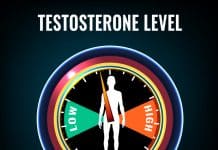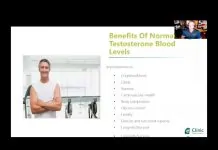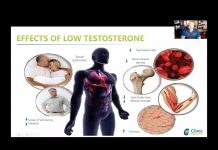By David Skutt
IGF-1, What is it?
IGF-1 is a hormone produced in our body that is structurally very similar to insulin. It has an important role in growth during childhood and in adulthood, continues to have anabolic effects. IGF-1 is the main mediator of the effects of growth hormone, which, most of us know, can benefit male physique drastically and also has anti-aging effects.
IGF-1 In Relation to GH
As stated previously, IGF-1 is the primary mediator of GH secretion. So what exactly does that mean? It all starts in an area of the brain called the hypothalamus. Whenever GH needs to be secreted (GH levels are typically highest during periods of fasting and sleep) the hypothalamus releases growth hormone-releasing hormone (GHRH). This GHRH then binds to receptors in another area of the brain called the anterior pituitary. The anterior pituitary then releases GH into the bloodstream. GH has several effects on the body including a glucose sparing effect- meaning that instead of the body utilizing glucose as a primary energy source, the body taps into adipose tissue, using stored fat as energy. In this regard, GH can significantly HELP BURN FAT. However, this is not the only favorable action of GH. GH also has several anabolic growth effects. It increases the uptake of amino acids from the blood and increases protein synthesis in skeletal muscle tissue. This anabolism however, can be come problematic due to the fact that GH ALSO targets bone cells and just about every other cell in the body.
Excessive GH use can lead to a condition called acromegaly, which is characterized by uncontrolled bone growth. The most noticeable feature of someone with acromegaly or HGH abuse is the development of a jagged/uncharacteristically large jawline.
Where does IGF-1 come into play?
GH acts directly on the liver to produce IGF-1.
This IGF-1 is then released into the blood stream to further stimulate the growth effects of GH. These two hormones work synergistically to promote cellular growth effects to the bone cells, muscle cells, nervous system cells, immune cells, and just about every cell in our body. GH also has a “diabetogenic effect”, meaning that when GH binds to receptors on the liver, the liver is instructed to break down glycogen into glucose, which fuels growth effects.Other benefits and effects of IGF-1
Interestingly enough, elevated IGF-1 levels (from elevated GH levels) may potentially have a beneficial effect on erectile dysfunction [1]. In 2011 a paper titled “IGF-1 levels are significantly correlated with patient-reported measures of sexual function” Growth hormone (GH) supplementation may help to preserve erectile function. Researchers assessed whether serum insulin-like growth factor 1 (IGF-1) levels, a surrogate for GH levels, correlated with sexual function scores in 65 men who completed the Sexual Health Inventory for Men (SHIM) and Expanded Prostate Cancer Index Composite (EPIC) questionnaires, and had serum IGF-1 and testosterone levels determined. Median±s.d. IGF-1 level, SHIM and EPIC scores were 235.0±86.4, 19.5±8.7 and 56.4±28.3 mg ml−1, respectively. IGF-1 levels and total SHIM score correlate significantly (r=0.31, P=0.02), as do IGF-1 levels and all individual SHIM question scores, and IGF-1 levels and the sexual domain of the EPIC questionnaire (r=0.30, P=0.02.
This figure represents the total Sexual Health Inventory for Men (SHIM) score vs serum insulin-like growth factor (IGF-1) level. All subjects’ IGF-1 levels plotted against their self-reported scores of sexual function based on total SHIM score. There is a statistically significant correlation between the two measured values, (Spearman’s correlation coefficient, r=0.31; P=0.02).
Another study published titled “Men with high levels of anabolic hormones less likely to develop worsening frailty” Proved that having higher baseline levels of vitamin D, insulin-like growth factor-1 (IGF-1) and its binding protein 3 (IGFBP3) was associated with a lower risk of worse frailty status four years later [2]. “Vitamin D, besides maintaining bone health, regulates muscle function, and low vitamin D levels are linked to lower muscle mass and strength. IGF-1 affects muscle growth and repair, and its action and levels are modified by its carrier protein IGFBP3,” Swiecicka said.
Also linked to a lower likelihood of frailty status worsening were higher baseline levels of the hormone dehydroepiandrosterone sulfate (DHEA-S), but only in the oldest men. Several potential pathways could link DHEA-S with frailty. Swiecicka said, “DHEA-S may have direct anabolic effect on muscle, and, more recently, its neuroprotective and immune system-modulating effects have been described.”Products that naturally raise IGF-1 levels
How might we safely raise GH and IGF-1 levels? There are two types of drugs that can safely raise GH and IGF-1 levels without greatly exceeding normal physiological levels (the higher we exceed normal physiological levels the greater the risk for unwanted pathology such as acromegaly and enlarged organs). These two types of drugs are:1.Growth Hormone Secretagogues
2. Growth Hormone Releasing Hormone MimeticsGrowth Hormone Secretagogues (GHS)
GHSs are typically sequences of connected peptides (called Growth Hormone Releasing Peptides) that bind to the GHS receptor [3]. These receptors are present in many areas of the body, but of importance, in the hypothalamus and anterior pituitary, the areas responsible for GH release. The natural ligand to the GHS receptor in the body is ghrelin, the hormone responsible for sensing hunger and speeding up gastric emptying. This is why when GHRP-6 is administered subcutaneously, the patient will often report voracious hunger. This effect may be beneficial to those who have trouble consuming enough food to gain weight and muscle mass. Not only does this drug induce hunger but it causes a large but very shortly sustained release in GH.Typically this GH “spike” only lasts about 4 hours (GHRP-6 has a very short half-life in the body). This short duration disallows a proportional IGF-1 response from the liver. This problem was solved with the invention of Ibutamoren.
Ibutamoren is a non-peptidic compound (vs peptidic GHRPs) that binds to the GHS receptor.Ibutamoren, as a ligand, acts directly on arcuate neurons of hypothalamus to stimulate the release of GHRH. Activation of these neurons by ibutamoren can be inhibited by sst (somatostatin) or pretreatment with GH (IGF-1 Feedback inhibition) [3].
An initial dose of ibutamoren causes a large spike in growth hormone levels (following normal physiologic pulsatile secretion) along with a large spike in cortisol. Subsequent and continued daily administration causes (comparatively) much smaller spikes in GH. IGF-1 levels become and stay elevated without a cortisol spike. If a dose is missed within 24 hours (half life of ibutamoren is 24 hours), IGF-1 will drop due to decreased liver stimulation from GH output. GHRH secretion is slowed by the continuously higher IGF-1 concentration, creating a safe negative feedback loop [3]. GHRPs DO NOT have a negative feedback loop because the GH spike is not sustained long enough (due to a short 4 hour half life) to allow for a sustained increase in IGF-1 (unless taken every few hours over a couple of days) GHRPs also do not allow for normal physiologic pulsatile function (which ibutamoren mimics). This negative feedback loop makes ibutamoren relatively very safe when compared to exogenous GH administration.
Growth Hormone Releasing Hormone Mimetics
These peptides mimic the hormone GHRH. GHRH is released from the hypothalamus and it binds to receptors on the anterior pituitary. The anterior pituitary then releases growth hormone into the bloodstream. The most popular GHRH mimetic is Sermorelin. It binds to the GHRH receptors of the hypothalamus and causes a marked increase in GH levels and IGF-1 levels.Notice that GH Secretagogues bind to the GHS receptor and GHRH mimetics bind to the GHRH receptor. This means that there are two different pathways used to increase natural GH and IGF-1 production. If a GHRH mimetic is used along with a GHS, the synergistic effect should markedly increase natural GH and IGF-1 production!
IGF-1 in Relation to Testosterone
In a study titled “Testosterone administration increases insulin-like growth factor-I levels in normal men.” Researchers discovered just that [4]. Although testosterone (T) administration can increase insulin-like growth factor-I (IGF-I) when administered to hypogonadal men, no studies have examined whether this occurs in normal men. The present study was undertaken to determine if an increase in IGF-I may be part of the anabolic effect of androgens. Researchers enrolled 11 normal men in a randomized, double-blinded cross-over study. Subjects were assigned to receive either T enanthate (TE) (300 mg im, each week) or nandrolone (ND) decanoate (300 mg im, each week) for 6 weeks. After a washout period subjects were administered the alternate treatment. Pre- and posttreatment serum was analyzed for IGF-I by RIA after acid-ethanol extraction. Although GH levels were not significantly different after either TE or ND treatment, they tended to increase after TE treatment (1.23 +/- 0.28 ng/mL vs. 3.3 +/- 1.03 ng/mL) but remained unchanged after ND treatment (1.68 +/- 0.68 ng/mL vs. 1.89 +/- 0.64 ng/mL). Serum total T levels increased 32 +/- 0.05 nmol/L in the TE-treated men, but fell by 7 +/- 0.02 nmol/L in the ND-treated men (P < 0.0001). These data indicate that when normal men are given TE, serum IGF-I levels increase after 6 weeks of treatment.References:
1. Pastuszak AW, Liu JS, Vij A, Mohamed O, Sathyamoorthy K, Lipshultz LI, Khera M. IGF-1 levels are significantly correlated with patient-reported measures of sexual function. Int J Impot Res. 2011 Sep-Oct;23(5):220-6
2. Smith, Roy G. Human Growth Hormone Research and Clinical Practice.
3. Hobbs CJ, Plymate SR, Rosen CJ, Adler RA. Testosterone administration increases insulin-like growth factor-I levels in normal men. J Clin Endocrinol Metab. 1993 Sep;77(3):776-9.
4. Agnieszka Swiecicka, Mark Lunt, Tomas Ahern, Terence W. O’Neil. Higher Anabolic Hormone Levels Predict Lower Risk of Worsening Frailty in Men: Prospective Results from the European Male Ageing Study. Presented at Endocrine Society Annual Meeting 2017.


